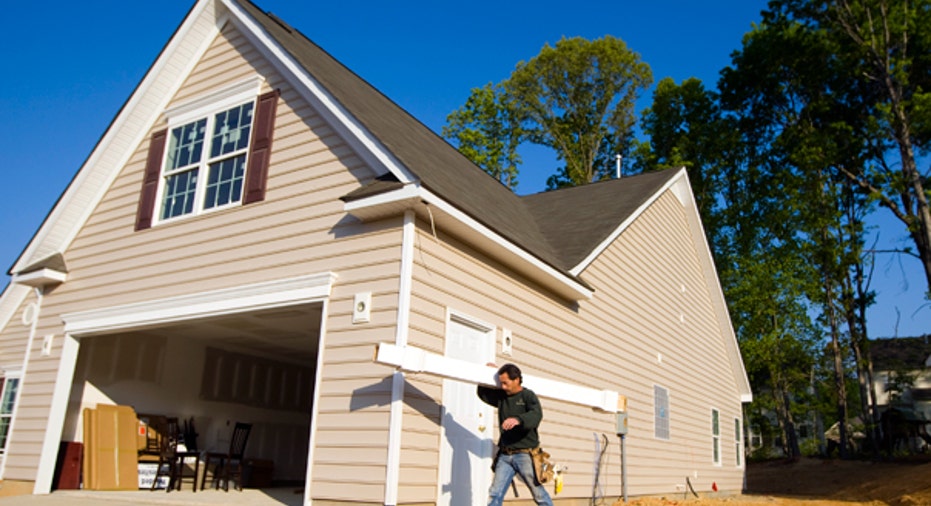When Is it a Good Idea to Refinance Into an ARM?

Low mortgage rates have many homeowners rushing to refinance, and the vast majority of those borrowers opt for fixed-rate home loans. Yet for some homeowners, an adjustable-rate mortgage can be a financially savvy choice when they refinance.
Nowadays, adjustable-rate mortgages, or ARMs, appeal to two groups of borrowers. The first group consists of homeowners who need jumbo loans, above the conforming loan limit of $417,000 in most markets and $625,500 in high-cost housing markets. Many of these borrowers want to keep their payments as low as possible when they refinance, so they're attracted to lower-rate ARMs. The second group comprises homeowners who have firm plans to sell their homes in a few years because of scheduled job transfers or retirement.
"The people who are most interested in ARMs tend to have a jumbo loan, but we also see people who know they will sell their home within a few years," says Bill Kusman, president of mortgages for First Bank, in St. Louis.
If your goal is to keep your monthly payments as low as possible and you have a specific time frame for selling your property, an ARM might be the best refinance option. But if the goal is to pay down the loan quickly or to avoid the risk of rising monthly payments in the future, then a fixed-rate loan might be a better refinance option.
The initial rate on an adjustable-rate mortgage tends to be lower than on a fixed-rate mortgage. In the third quarter of 2011, the rate on the 5/1 ARM averaged 3.21% in Bankrate's weekly survey; the average rate on the 30-year fixed-rate mortgage was 4.49%. On a $100,000 loan at those rates, the principal and interest on the ARM would be $73 less each month.
Despite the higher initial payments, about 93% of refinance applications in September were for fixed-rate mortgages, and 7% were for ARMs, according to the Mortgage Bankers Association. Michael Jablonski, executive vice president and mortgage retail production manager for BB&T Bank in Wilson, N.C., says ARM applications are relatively rare because borrowers generally want to lock in a fixed rate when mortgage rates are historically low.
"Uncertainty about their income, expenses, taxes and the economy have led people to gravitate to fixed-rate mortgages just so that they have one thing that they have certainty about," Jablonski says.
Jablonski says even homeowners who are fairly certain about their plans to sell their home for a job transfer or retirement often choose a fixed-rate mortgage because they recognize they may not be able to sell their home right away.
Establish Your Refinance Goals
Gail Kullman, a senior loan officer with PrimeLending in Alexandria, Va., says that homeowners need to make sure they fit their mortgage refinance into their overall financial plans.
"If your intent is to pay off the house quickly, you may be better off with a short-term loan such as a 10-year or 15-year fixed-rate loan rather than an ARM," Kullman says. "If you are planning to sell the property within a few years or want to retire, then the short-term loan will allow you to build equity faster."
The downside of a shorter-term loan is the monthly payments on the refinance are higher. For example, a $300,000 5/1 ARM at 3.25% would have a monthly principal and interest payment of $1,306 for the initial, five-year fixed-rate period. A $300,000, 15-year fixed-rate loan at 3.625% would have a monthly principal and interest payment of $2,163.
Qualifying for an ARM refinance
Kullman says most lenders require 20% equity for a refinance, although some allow 10% equity for borrowers with excellent credit and income.
"The problem is, if you have less than 20% equity, you will need to pay private mortgage insurance (PMI), which will add to your monthly payment," Kullman says. "PMI companies don't particularly like ARMs, either, so they are likely to charge higher PMI premiums if you choose an ARM."
Kullman says ARM borrowers will be qualified for their loan based on an interest rate that is 2% higher than the initial rate.
"In other words, if you are applying for an ARM that starts at 3.5%, you need to have the debt-to-income ratio to qualify for your loan amount at 5.5%," Kullman says.
ARM Advice
If you decide the low monthly payments associated with an ARM are worth the risk when you refinance, Kullman recommends choosing an ARM with a longer term than you think you need.
"If you plan to move in three years, I'd suggest a five-year ARM to be on the safe side," says Kullman.
Jablonski says that in the rare event of borrowers having absolute certainty about their ability to sell their home or pay off their mortgage before the loan resets to a potentially higher rate, an ARM refinance could make sense.
"However, borrowers need to account for the possibility they would have to pay the maximum payment," says Jablonski. "But, most important of all, no one should ever use an ARM to be able to afford a larger mortgage. That's a slippery slope, because if you have trouble qualifying for your loan, any little hiccup in your income can cause problems."



















